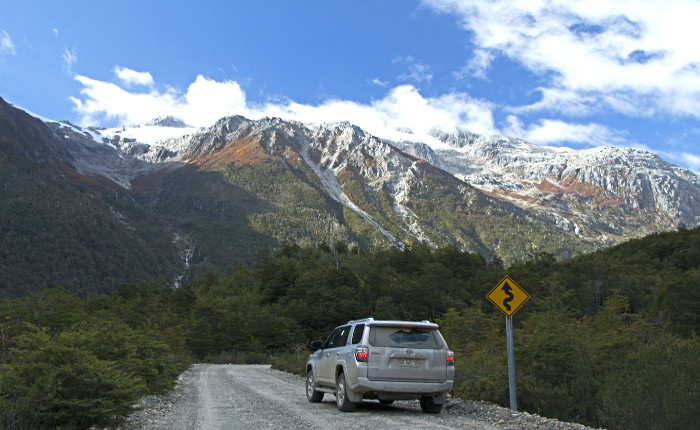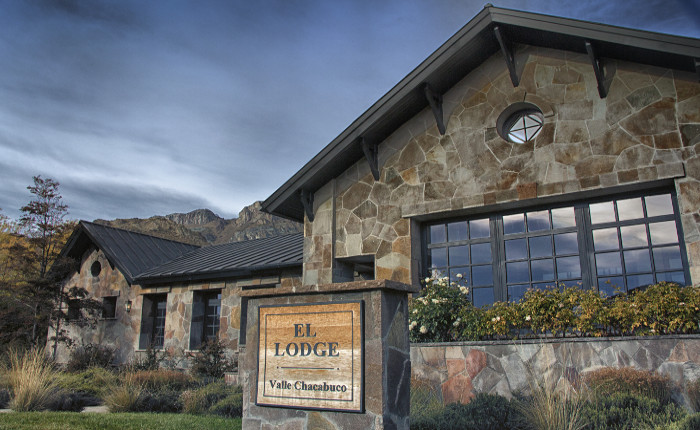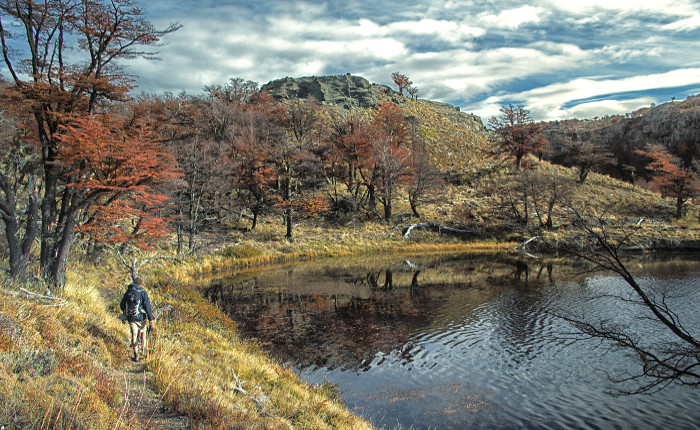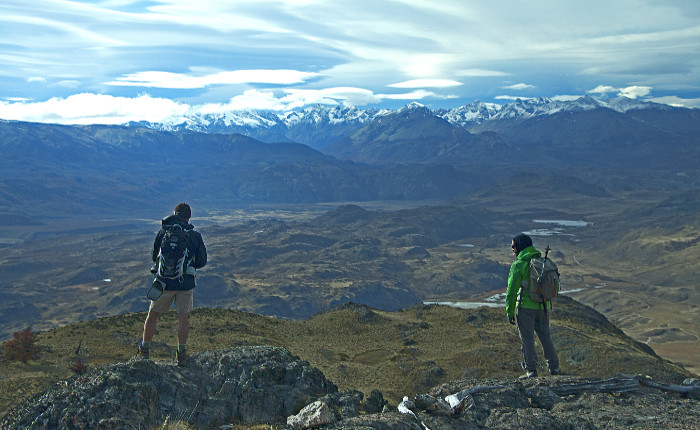We still thank God we ran into each other. What would we be doing if we hadn't?
It's not hard to fall in love with Patagonia's beauty. A vast chunk of territory stretched across Chile and Argentina at the foot of South America, it's a land of soaring craggy mountains and jade-blue glacial lakes. But Kris Tompkins found love here too. A chance meeting in a tiny restaurant in the middle of nowhere, was the beginning of an incredible adventure.
The man she bumped into in Patagonia, was an old friend: Doug Tomkins. Maybe it was the unique atmosphere here? Something clicked. Doug had devoted himself to spending vast amounts of his not insignificant wealth preserving the unique habitats of Patagonia.
Shortly after that meeting, Kris quit her job as CEO of a clothing company in California and flew to join Doug - in deepest Patagonia.
That was a couple of decades or so ago. Since then, using their own money and donations from like-minded donors, the couple have bought 2.2 million acres in Patagonia; protecting it for future generations.
And, they're giving it to them. They've already donated four parks to the National Parks authorities in Chile and Argentina. The next on the list? The one I'm visiting.

Parque Patagonia is the couple's showcase project in Chile. The park currently covers nearly 200,000 acres, much of it formerly grazed by cattle and sheep. Now it's returning to its natural state. Wild species previously on the danger list are slowly recovering; in particular South America's only big cat, the majestic and shy Puma and a unique species of deer, the Huemul.
Patagonia is becoming more popular with tourists, particularly on the Argentine side. Aficionados might even say it's a little crowded in some places. But this project is located in Chile's Aysén region. It's way off the beaten track - literally. You need a 4x4 to get here.
Kris and I are sat on a huge sofa in the lodge that they're just completing for tourism to start in earnest in October, when the new season begins. The handover process to the Chile Parks Authority will begin soon after. Once this is done, it will be Chile's newest National Park.
The lodge is wonderfully atmospheric with dark wood panelling, a vast fireplace and antique furniture reclaimed from old houses in Buenos Aires. There are just six bedrooms offering comfy if slightly eclectic sleeping options, with bunk beds in a couple. Four more deluxe doubles will be ready for the new season.
"It has been a wildly arduous task," Kris explains.
"It's beautiful here, spectacular. We wanted architecture that would reflect the importance of the habitat: putting the project on the same level as protecting a masterpiece. The way you would a Picasso."

We set out next day to explore this natural masterpiece. Along with a visitor's centre and campsite they've created marked trails of varying distances. The High Lakes trail is a circular hike of 17 miles.
Matías, one of the locals who've been trained as guides, shows us the way. When he's not guiding, Matías works with local schoolkids. With support from the Parque Patagonia project, he brings them here to camp and learn about conservation.
The trail takes us first through low level grassland. Before we get properly started we see a small herd of guanacos. They look a bit like a camel, without the hump. They fix us with long, curious glances.
"We can get quite close. They not all afraid of people," explains Matías.
As we walk on, the way is littered with tiny filaments of ice – dew that has frozen just as it has fallen – the most delicate of mud-dusted fronds, sparkling and crunchy under our boots. Soon we reach the trees.
Like Kris, Doug and many others I meet here, I see the passion this incredible scenery stirs in Matías too. "This is my favourite time of year," he smiles. "Autumn brings out all the colours. It's so beautiful."
The local deciduous tree, the ñire, is particularly lovely. Its tiny, deep red leaves are almost glowing in the early sunlight. Vast swathes grow only between certain altitudes creating red horizontal stripes across the mountains.

As we climb my pulse thuds through my temples. The air is chilly and clear. It feels good to exert myself. I fill my water bottle from a cool mountain stream and drink great gulps.
Matías points out unusual fungi, wild strawberries and birds. At the top the terrain becomes easier and we settle into a comfortable rhythm, walking along on top of the world. We drop behind steep escarpments to discover the first of several shimmering lakes.
We spot paw prints in the dust. "Puma," says Matías. "Probably a young one and its mother." We find more evidence of the big cats' presence. The half-eaten corpse of a guanaco.
The puma population is critically endangered here. "For years they were killed – seen as a menace to the ranchers’ sheep." explains Matías. Pumas are very hard to see in the wild. In his years of guiding Matías has only seen one. We keep our eyes peeled, but to no avail.
The climax of the walk comes shortly after we've eaten our picnic lunch. We skirt another glassy blue lake and arrive on a vast table of granite.
Laid out in front is the whole Chacabuco river valley. The view goes on forever with different hues and textures at every level.
Snowcapped peaks far away glisten in the sunshine, foothills are a surprising dark blue from this distance, the river snakes across the valley floor, green and moody. We sit, silent awhile, awed by the scenery.

"This is my dream," says Matías, finally. "To bring people here every day and show them this incredible place."
On the way back down he points out a shrub at our feet covered in small black berries. He plucks a few for me. They're sharp, refreshing. They taste like blueberries. "They’re called calafate," he explains. "Locals say that if you eat them, you will come back to Patagonia again."
I cram a couple more into my mouth. I've fallen in love too.
[Sadly Doug Tompkins passed away in 2015. Kristine continues their remarkable mission with the Tompkins Conservation Foundation.]